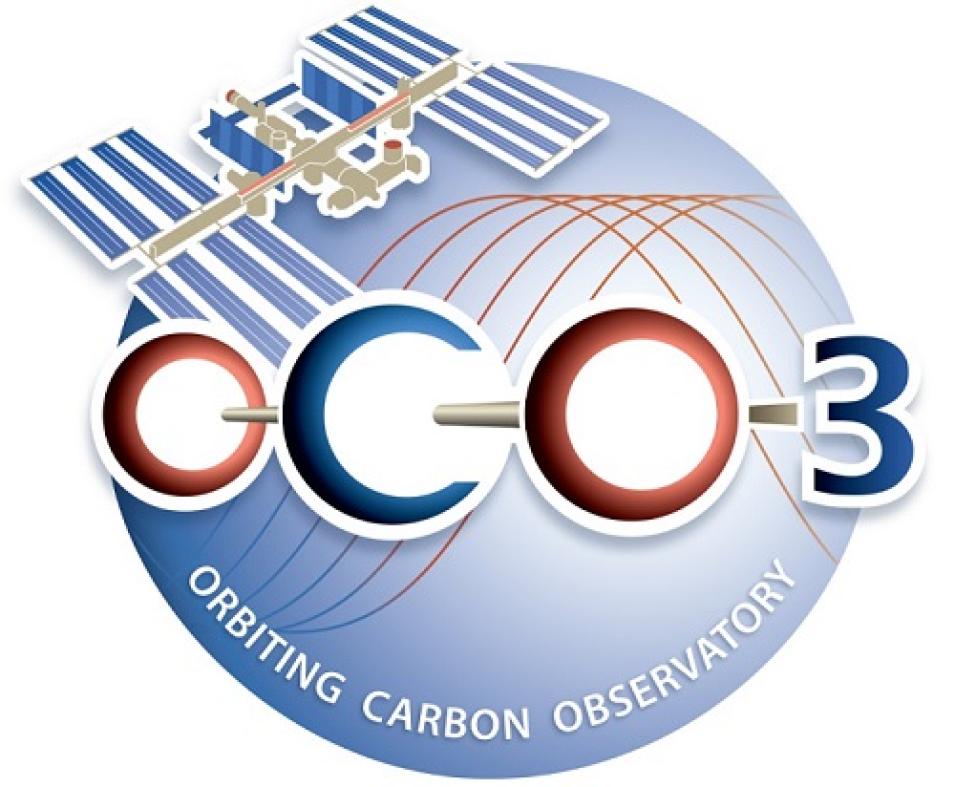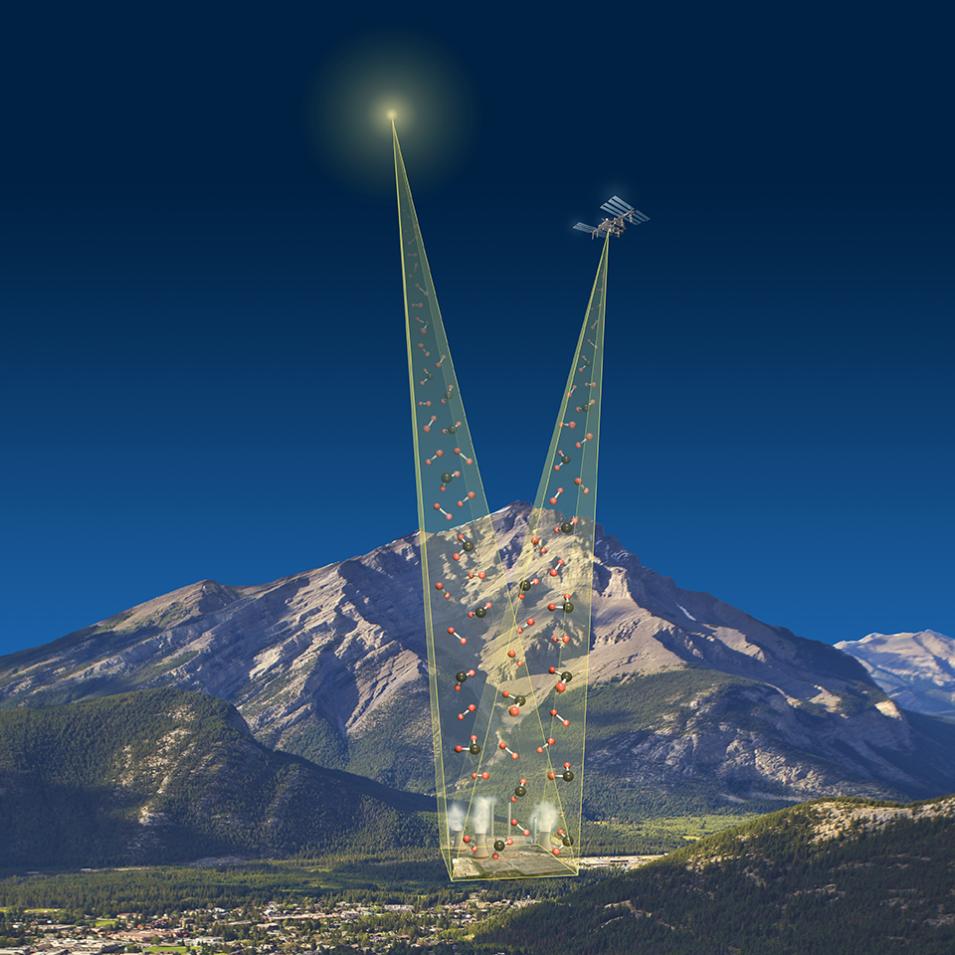Like OCO-2, OCO-3 will not measure CO2 directly, but rather will measure the intensity of sunlight reflected from the presence of CO2 in a column of air. The OCO-3 instrument uses a diffraction grating (like the back of a compact disk) to separate incoming sunlight into a spectrum of multiple component colors. CO2 and molecular oxygen (O2) molecules in the atmosphere absorb light energy at very specific wavelengths. The intensity of these wavelength bands is analyzed, with the absorption levels indicating the presence of specific gasses. By simultaneously measuring gases over the same location and over time, OCO-3 will be able to track surface changes.
The OCO-3 instrument will acquire data in three different measurement modes. In Nadir Mode, the instrument views the ground directly below the space station. In Glint Mode, the instrument tracks near the location where sunlight is directly reflected on Earth’s surface (which enhances the instrument’s ability to acquire highly accurate measurements, particularly over the ocean). In Target Mode, the instrument views and tracks a specified surface target continuously as the ISS passes overhead. Target Mode provides the capability to collect a large number of measurements over sites where ground-based and airborne instruments also measure atmospheric CO2. The OCO-3 Science Team will compare Target Mode measurements with those acquired by ground-based and airborne instruments to validate OCO-3 mission data.
OCO-3 data will be available through the Goddard Earth Sciences Data and Information Services Center (GES DISC). GES DISC is the EOSDIS DAAC responsible for NASA Earth science satellite and modeling data products related to global precipitation, atmospheric composition, atmospheric dynamics, hydrology, and solar irradiance, and archives and disseminates OCO-2 data.
Together, OCO-3, ECOSTRESS, and GEDI will provide further insight into Earth’s complex systems, especially the cycling of carbon and CO2. Data from these new missions, coming from Earth’s largest orbiting observing platform, will contribute significantly to the climate data record being compiled by space-based instruments—data that are fully and freely available to support interdisciplinary global investigations and research.





